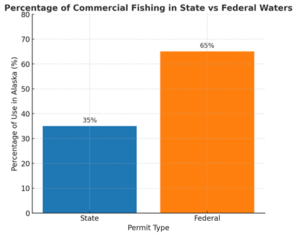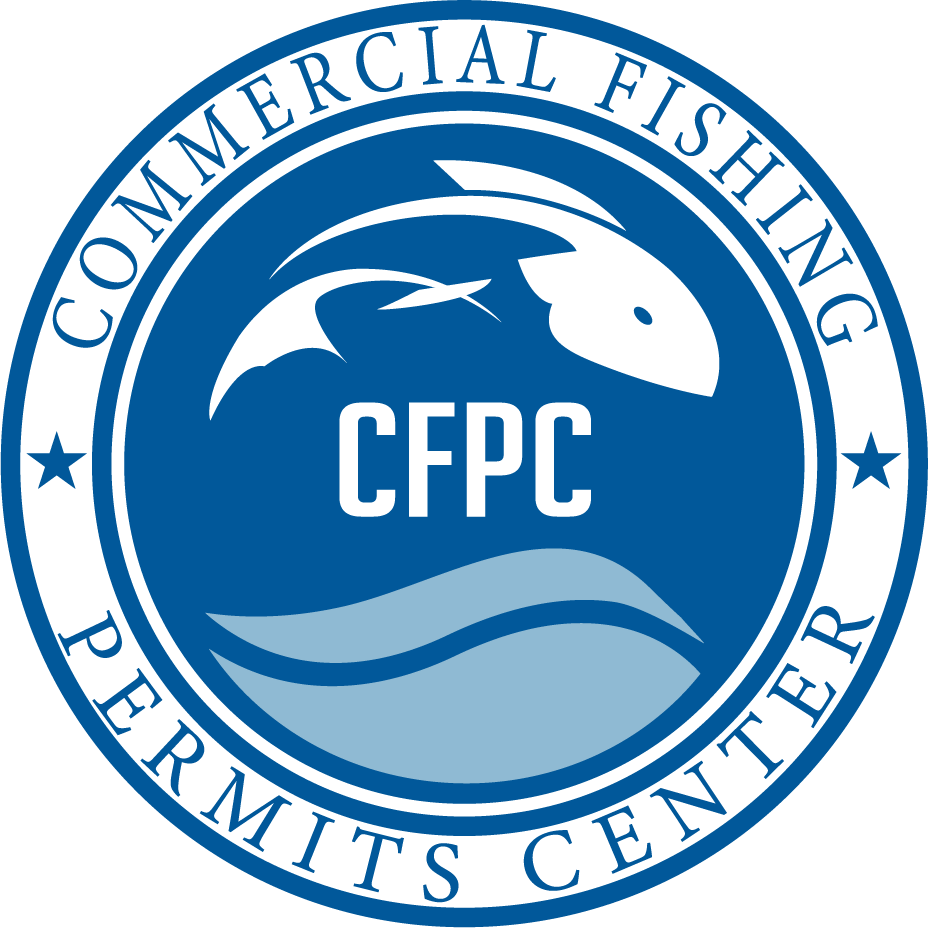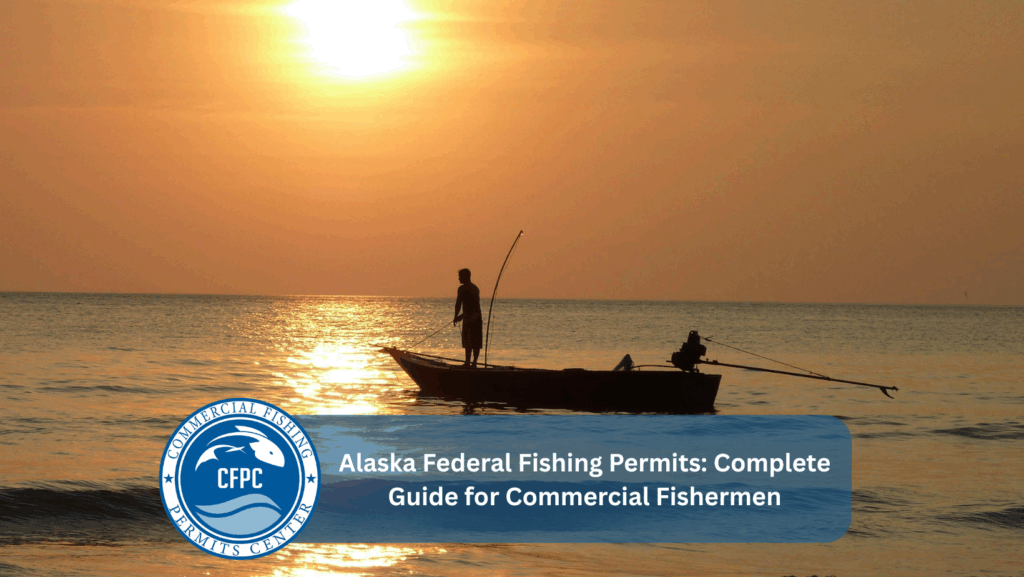Running a fishing business in Alaska is a great experience as well as a tough one. The state, surrounded by immaculate nature and teeming with marine life, is a place where you can find one of the richest fishing grounds in the world. But, every operator is obliged to follow strict legal requirements before they go and cast their nets into those waters. One of the most necessary things is getting the right Alaska Federal Fishing Permits.
These permits are a must for staying within the limits of the regulations at the federal level and, at the same time, they are a stronghold in the protection of marine ecosystems. They offer access to particular fisheries, set the levels of harvesting, and provide guarantees for the use of sustainable methods. For the business owners, these permits are not just some papers, they are a legal authorization to have a safe place in the market. This manual covers the fundamentals, in-depth aspects, comparison with state permits, and the practical steps for the itinerary to be stepped and well-managed.
Understanding Alaska Federal Fishing Permits
Federal fish licenses are the formal consent for commercial activities in waters that are regulated by the federal government. Such waters include those from three to 200 nautical miles offshore. The National Oceanic and Atmospheric Administration (NOAA), a body in charge of the protection and sustainable management of fisheries in the U.S., is the one that issues permits.
Importance of Permits
If you don’t have federal permits, it is unlawful to fish in the ocean beyond state waters. You are also exposing yourself to the risk of getting a fine, losing your fishing rights, or even capturing the fish illegally. In the case of Alaska, most of the commercial activities have gone deeply into the sea, so these permits are simply a must.
Key Functions
- Control access to regulated fisheries.
- Monitor catch quantities for sustainability.
- Support fair allocation of resources across fleets.
- Provide accountability through reporting and tracking.
Comparison of State vs Federal Fishing Permits
| Feature | State Fishing Permits | Federal Fishing Permits |
|---|---|---|
| Jurisdiction | 0–3 nautical miles from shore | 3–200 nautical miles offshore |
| Issuing Authority | Alaska Department of Fish and Game (ADF&G) | National Oceanic and Atmospheric Administration (NOAA) |
| Focus | Local conservation and recreational balance | National conservation and large-scale commerce |
| Examples | Salmon permits, crab licenses | Halibut, Chinook salmon, groundfish permits |
This comparison highlights why businesses often require both state and federal licenses.
Detailed Aspects of Alaska Federal Fishing Permits
There are several factors that need to be taken into account before a vessel can be issued the federal permits, these factors range from the vessel’s condition to the qualifications of the crew. Every permit is associated with certain fisheries, so it is very important to find the right mix for your business.
Vessel Requirements
It is essential for commercial vessels to fulfill safety and equipment criteria. Most vessels have nets, longlines, and onboard storage facilities to manage their large catches.
Crew Expertise
One of the best ways to ensure safety standard compliance and maximization of the vessel’s efficiency is to hire experienced crew members. In particular, when operating in the volatile waters of Alaska, a drill on the proper way of handling the situation is very necessary.
Permit Types
Federal permits vary depending on the target species and fishery. Examples include:
- Halibut Fishing Permit: Covers commercial harvest in federal halibut fisheries.
- Groundfish Permits: Authorize fishing for species such as pollock or cod.
- Salmon Licenses: Often tied to Chinook fisheries in federal waters.
Application Essentials
Applicants must provide:
- Vessel information and ownership proof.
- Business identification details.
- Fishing history where required.
- Payment of processing fees.
Failure to include accurate documentation can delay approvals, impacting business operations.
Conservation Responsibility
NOAA uses permits as a tool to conserve the environment. Quotas and catch reports are managed by the authorities to limit fishing below sustainable levels, thus allowing future generations of fishermen to prosper.
Comparing State and Federal Permits: Practical Examples
There are lots of operators in Alaska who need both a state and a federal permit as a result of the jurisdiction overlap. For example, a salmon fishing company may have started in the waters belonging to the state but then followed the fish into the areas of the federal zone. Without both permits, such a company would be considered illegal under the law.
Case Study: Halibut Fishermen
Halibut is the most profitable fishery in Alaska. Although a few catches are done in the waters of the state, most of them go far offshore. Hence, it is very important that halibut permits in the federal sector are issued. A fishermen with only a state license will get into a lot of trouble if they extend their nets into a federally-controlled area.

- State Permits: Cover 35% of commercial fishing in Alaska.
- Federal Permits: Account for the larger share at 65%.
- Key Insight: Most fishing activity operates under federal jurisdiction.
This chart illustrates that most large-scale operations depend heavily on federal permits.
Practical Tips for Obtaining Alaska Federal Fishing Permits
Navigating the process requires planning and organization. Here are essential steps:
- Identify Fisheries: Determine which species your business targets.
- Review Jurisdictions: Check whether operations extend into federal waters.
- Prepare Documents: Gather ownership, vessel, and crew information.
- Submit Applications: File with NOAA and pay required fees.
Streamlining the Process
Online applications have made the whole process more convenient and quicker. There is no need to send out the physical forms by mail anymore. Nevertheless, accuracy is still a must if you want to be successful in your application and not get rejected.
Engaging the Help of Professionals
A large percentage of business owners seek help from the third-party which in turn will be the one to manage the applications. Specialists not only can provide getting and maintain compliance but also can save your time and efforts by getting permits for you in less time.
Obtaining Success with Alaska Federal Fishing Permits
To be a successful commercial fisherman in Alaska you need to have more than just skills; you need to have good compliance as well. Commercial Fishing Permits Center not only provide legal access to the most world’s abundant fisheries but also help in the protection of the various marine ecosystems that are the basis for sustainable industry growth. Recognizing the differences between state and federal jurisdictions, producing the right applications, and taking conservation responsibilities are the main keys for succeeding in the long run.
It is you who will make the decision to invest in the correct permits, hence guaranteeing the safety of your business, crew, and the opportunities you will have in the future. The waters of Alaska offer not less than a great deal, but this is only for those who will be able to navigate them justly. Take the step today, get your permits, and become one of the world’s most competitive and rewarding environments where your fishing venture can flourish.


No Comments
Be the first to start a conversation